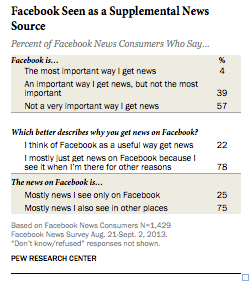Above: Data from a new Knight Foundation report offers an in-depth view into the nonprofit news industry, revealing the significant progress that news organizations have made toward sustainability and the challenges they still face. Related Report “Finding a Foothold: How Nonprofit News Ventures Seek Sustainability“ The search for sustainable news business models requires good comparative […]
Article · October 29, 2013 by Michael Maness
